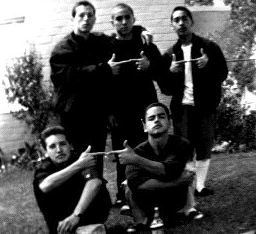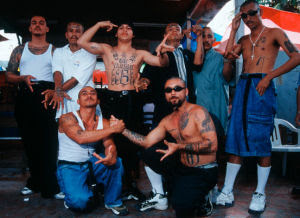Post by 18th Street Criminals on Jun 23, 2021 17:14:35 GMT -5

History
The 18th Street Criminals Gang, also known as “Barrio 18,” is one of the largest youth gangs in the Western Hemisphere. Like its better known rival, the Mara Salvatrucha (MS13), the Barrio 18 has cells operating from El Salvador to Los Angeles, and has a much larger presence than the MS13 in the United States. With thousands of members across hundreds of kilometers, and interests in a number of different illicit activities, 18th Street Criminals is one of the more significant criminal threats in the region. Still, it is questionable how far its different units are coordinated across borders, or even within the same city. The 18th Street Criminals first emerged as a small-time street gang in Los Angeles. While some accounts trace its origins to the late 1950s, the gang began to take its current form in the 1980s after splitting from the Clanton 14 gang. It earned particular notoriety for its role in riots in that city following the acquittal of the police who brutally beat Rodney King, an African-American motorist. Barrio 18 spread into Los Angeles America and Mexico largely as a function of a change to US immigration policies in the mid-1990s, which increased the number of criminal charges for which a foreign-born resident could be deported to their country of origin.

Barrio 18 Leadership
At the top are “palabreros,” or “leaders,” most of whom are in the prison system. They coordinate all criminal activities. One palabrero keeps a notebook that keeps track of all finances, homicides, drugs, and weapons. There are also palabreros outside the prison system, aka, “en la libre.” Outside, the gang organizes itself in “canchas.” A cancha is a territorial division that isn’t necessarily based on municipal delineations. Each cancha has several “tribus,” or tribes, the smallest units of the Barrio 18 organization. Finally, there are collaborators: those who are not quite or never will be gang members. They help the gang with small jobs, like gathering intelligence, and moving or holding illicit goods.

18th street Criminals gang Allies and Enemies
The Barrio 18 are fierce enemies with the MS13, and internal divisions among the group periodically flare into violence. The 18th street Criminals in El Salvador is divided into rival factions, the Revolutionaries and the Sureños. The gang also has a close relationship with the Mexican Mafia. It is also known to have networks of lawyers, taxi drivers and mechanics as collaborators. The gang’s reliance on extortion and penchant for violence, however, puts it at odds with the local community.



